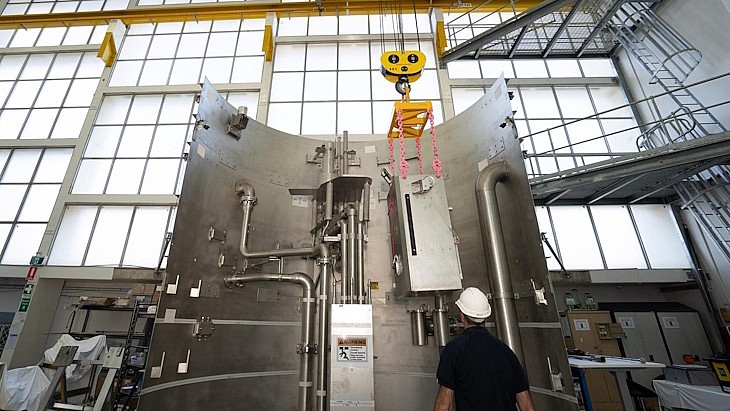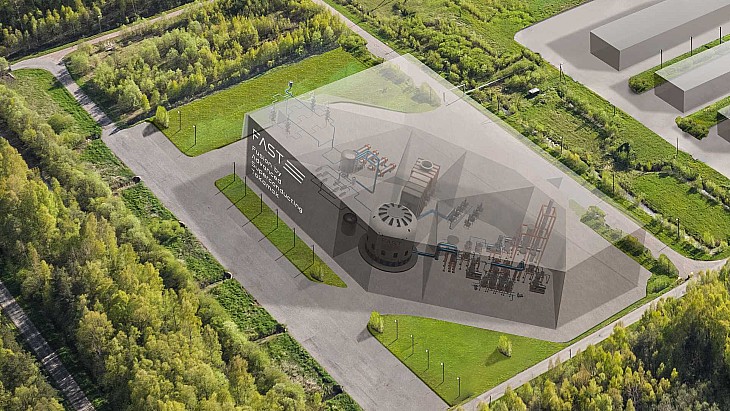Planning and design activities commenced in 2015, working towards the planned shutdown in March this year. As well as the replacement of the CNS - a three-metre-tall device next to the reactor core which slows down neutrons as they travel from the OPAL reactor through to the large scientific neutron beam instruments - the shutdown also included the replacement of the First Reactor Protection System, a primary system required for reactor safety.
Planning for the project included the construction of a full-scale mock-up of the CNS and reactor environment which allowed team members to undertake comprehensive training in conditions which mimicked the real environment. The mock-up was also used for developing the process for replacing the CNS and the specialist tooling required. Multiple practice runs of the removal and installation of the CNS, and crane manoeuvres using the life-size OPAL mock-up, were carried out over the year before the planned shutdown, and more than 100 bespoke hand-tools were designed and created by ANSTO's engineering workshop to support a unique range of maintenance activities.

A full-scale mock-up was used for training (Image: ANSTO]
Replacement of the CNS was a first-of-a-kind operation for Australia's nuclear science and technology organisation. General Manager for the OPAL Reactor, David Vittorio, said: "Since OPAL commenced operations 17 years ago, we've been in a constant state of forward planning for regular, scheduled maintenance periods to ensure OPAL continues to operate safely, reliably, and efficiently.
"This planned shutdown has been the most significant maintenance and upgrade programme in OPAL's history to date. We're very fortunate to have extensive engineering and maintenance expertise, and decades of experience in running nuclear research reactors to accomplish these types of projects."
The replacement CNS is slightly larger than the original one, and will increase the performance to 8 of the centre's 15 neutron beam instruments. Australian Centre for Neutron Scattering Director Jamie Schulz said: "The neutrons produced by OPAL support our unique facility and scientific instruments, allowing our researchers and industry partners to study the structure and dynamics of samples, such as molecules, polymers, proteins, and viruses."
The 20 MW OPAL reactor was officially opened in 2007 as a replacement for the HIFAR research reactor which operated from 1958 to 2007. It produces medical radioisotopes as well as enabling the supply of more than half of the global demand for irradiated silicon for use in electronics and green technologies. These functions were temporarily paused during the reactor shutdown, and ANSTO worked with alternative suppliers overseas to import critical nuclear medicine products while the reactor was out of service.

_89250.jpg)



_82983.jpg)
_34792.jpg)
_16403_79272.jpg)


_76087_55556.jpg)



